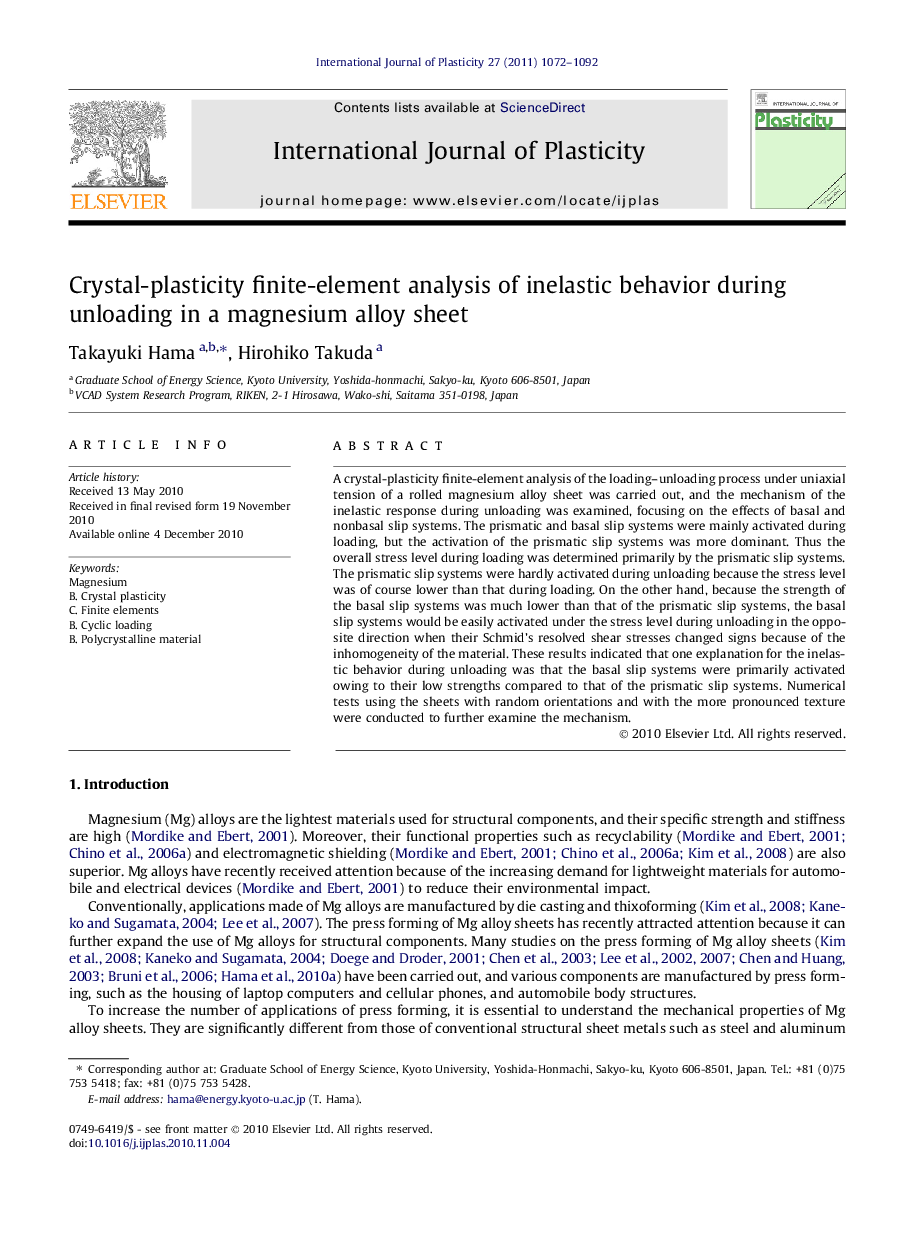| Article ID | Journal | Published Year | Pages | File Type |
|---|---|---|---|---|
| 789161 | International Journal of Plasticity | 2011 | 21 Pages |
A crystal-plasticity finite-element analysis of the loading–unloading process under uniaxial tension of a rolled magnesium alloy sheet was carried out, and the mechanism of the inelastic response during unloading was examined, focusing on the effects of basal and nonbasal slip systems. The prismatic and basal slip systems were mainly activated during loading, but the activation of the prismatic slip systems was more dominant. Thus the overall stress level during loading was determined primarily by the prismatic slip systems. The prismatic slip systems were hardly activated during unloading because the stress level was of course lower than that during loading. On the other hand, because the strength of the basal slip systems was much lower than that of the prismatic slip systems, the basal slip systems would be easily activated under the stress level during unloading in the opposite direction when their Schmid’s resolved shear stresses changed signs because of the inhomogeneity of the material. These results indicated that one explanation for the inelastic behavior during unloading was that the basal slip systems were primarily activated owing to their low strengths compared to that of the prismatic slip systems. Numerical tests using the sheets with random orientations and with the more pronounced texture were conducted to further examine the mechanism.
